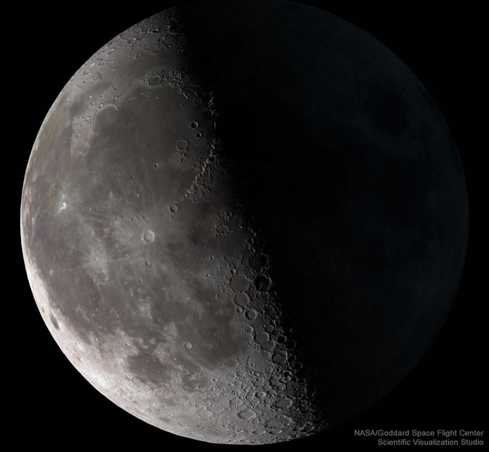The Moon in Sidereus nuncius and the Dialogue
The question of the nature of the Moon and its mysterious spots had been considered since classical antiquity with remarkable and widely diverging answers. According to both Aristotelian and Platonic understanding, the Moon belonged to the celestial bodies and was therefore of divine origin but in a weakened form since it was too near the Earth.
The lunar surface
According to Pythagorean tradition, which was embellished still further by Plutarch – since it was very imaginative – and ultimately also accepted by Johannes Kepler, there are high mountains, valleys, seas and even inhabitants on the Moon. When observing the Moon with a telescope in 1609, Galileo, in fact a convinced Copernican, acknowledged elevations and depressions that astonishingly confirmed the fantastic assertions of the Pythagoreans.
Sidereus nuncius
Galileo published his report on these observations of the Moon and other celestial phenomena in a small work, the Sidereus nuncius ("The sidereal messenger"). It was published in 1610, became an enormous success and quickly made Galileo famous. Galileo included a large part of the observations made in Sidereus nuncius in the First Day of the Dialogue.
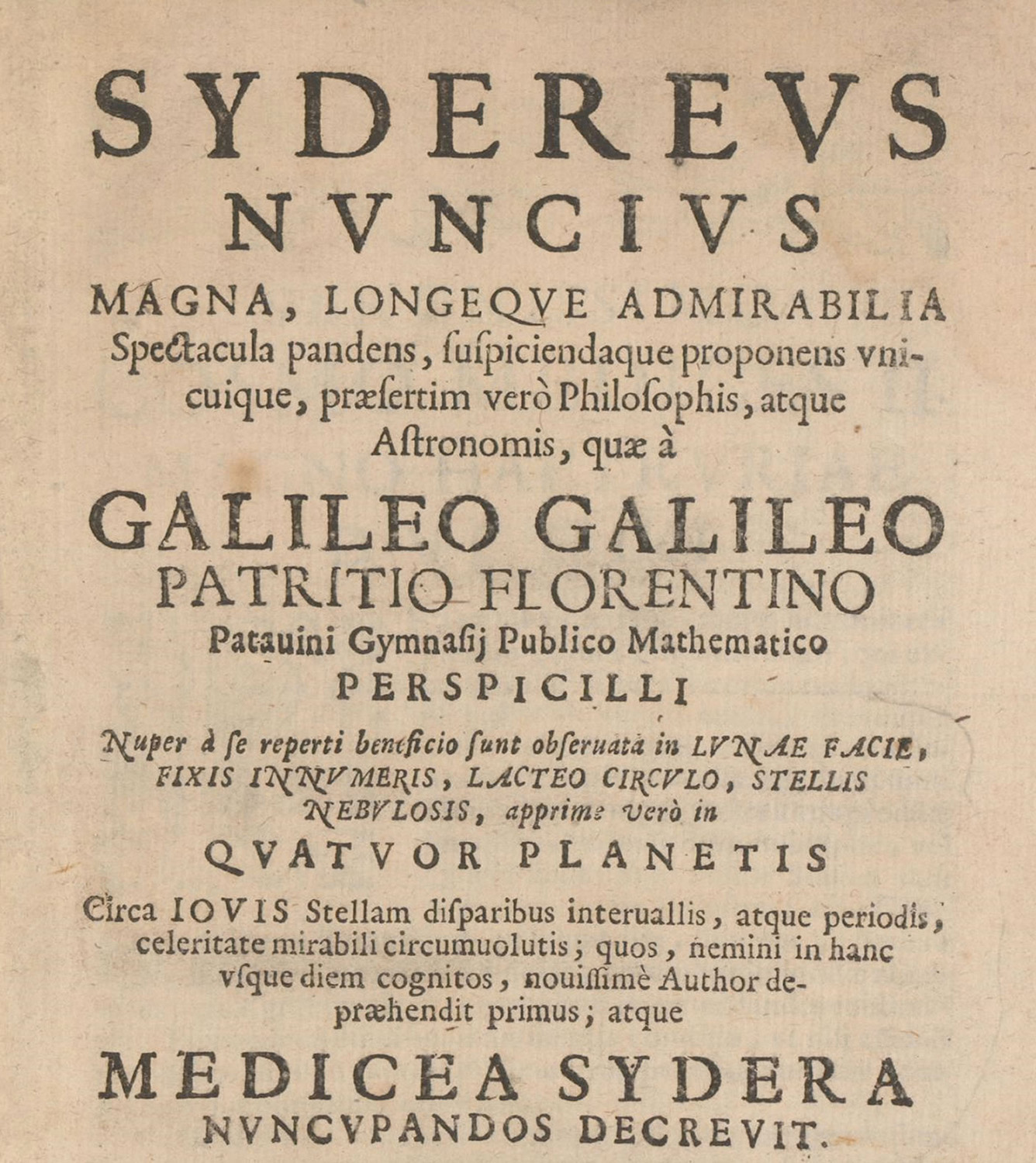
The title page of the external page "Sidereus Nuncius" combines with exemplary clarity an extraordinary accumulation of information and appreciations:
"The sidereal messenger, unfolding great and marvellous sights, and proposing them to the attention of everyone, but especially philosophers and astronomers, being such as have been observed by Galileo Galilei, Florentine, Professor of Mathematics in the University of Padua, with the aid of a telescope, lately invented by him, respecting the Moon’s surface, an innumerable number of fixed stars, the Milky Way, and nebulous stars, but especially respecting four planets which revolve round the planet Jupiter at different distances and in different periodic times, with amazing velocity, and which, after remaining unknown to everyone up to this day, the author recently discovered, and determined to name the Medicean Stars."
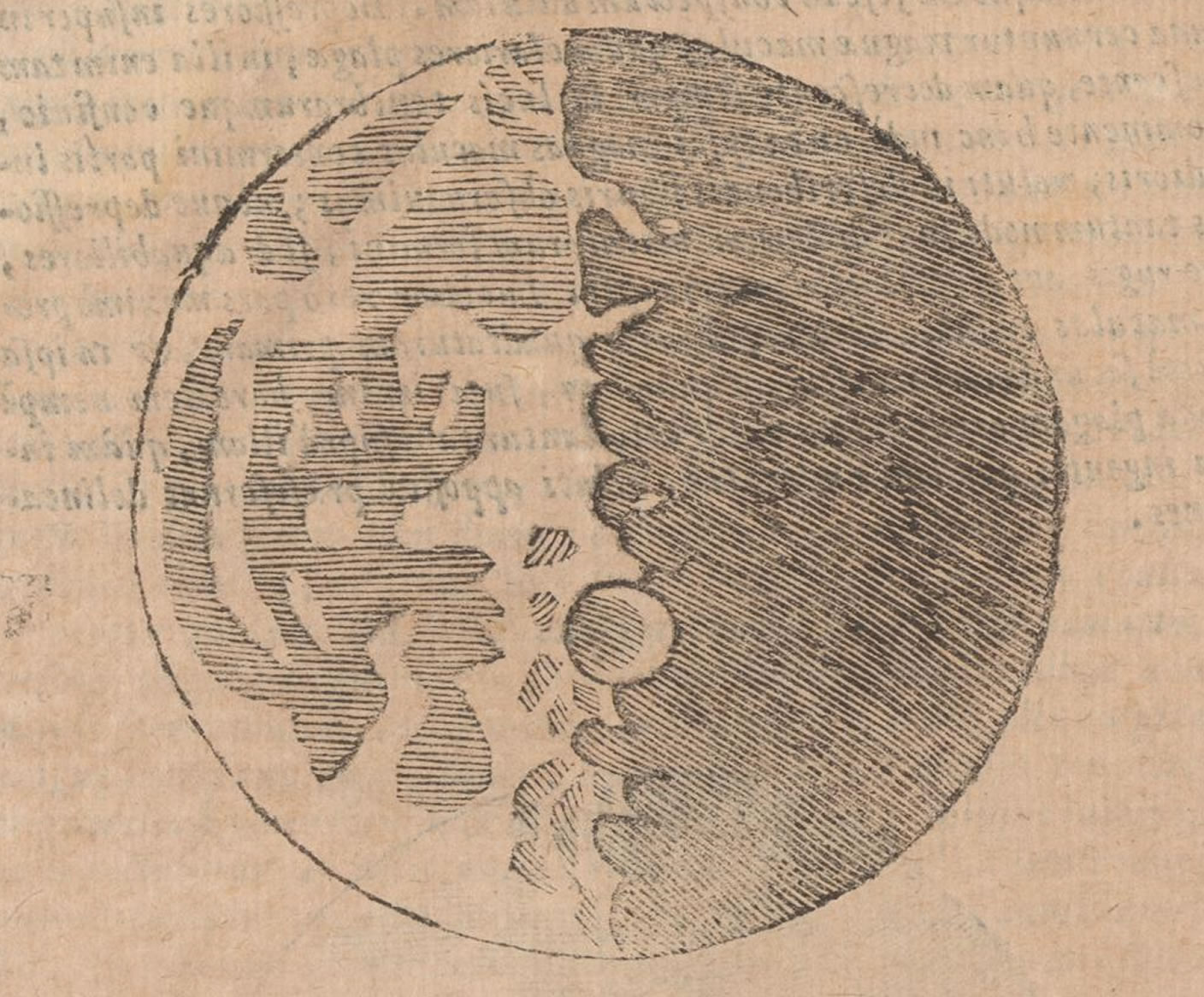
A document of 1606 attributed to Galileo already mentions a "jagged" line some time before the telescope was used. The "depression" mentioned is in all likelihood the one baptised Albategnius in 1651.
A comparison with modern photos of the Moon in quadrature shows that the separating line between light and shade is not at all clearly frayed and that the Albategnius depression was described by Galileo as much bigger than it is in reality. It may be supposed that Galileo was misled into exaggerating the differences in height by earlier Pythagorean descriptions.
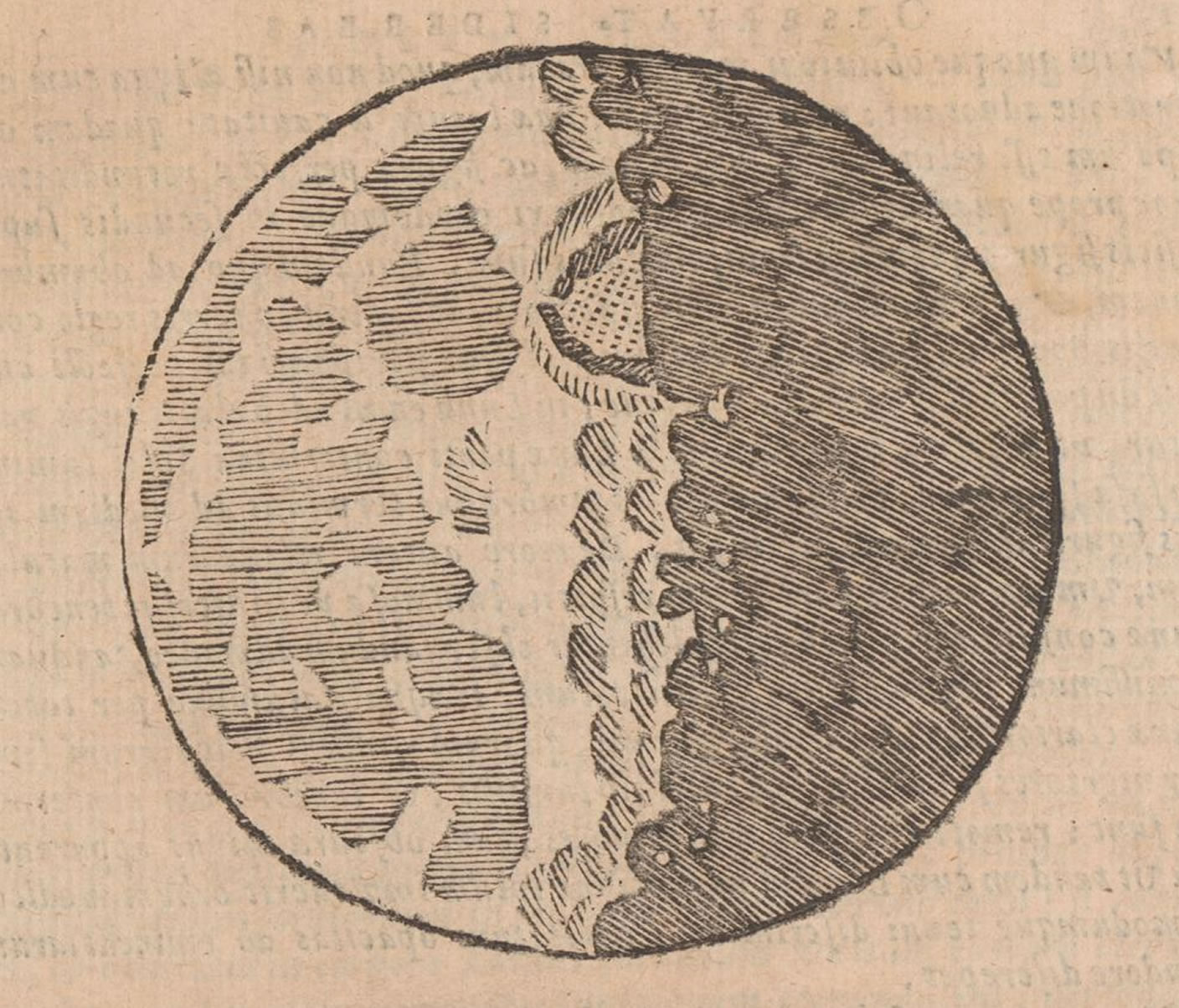
In 1613 the philosopher Cesare Cremonini (1550–1631) of Padua, one-time colleague of Galileo's, published the ‘Apologia dictorum Aristotelis de caelo' (Defence of Aristotle's theories of the heavens), in which he contested the astronomical discoveries that Galileo had made using a telescope. This document was banned by the Congregation of the Index on 18 January 1622 and heavily criticised on the First Day of the Dialogue.
Galileo writes: "Of the [moon's] appearance, I find no more exact description than that some say it represents a human face; others, that it is like the muzzle of a lion; still others, that it is Cain with a bundle of thorns on his back" (Dialogue, I 134, 1). The description refers to the spots on the Moon's surface, which according to mythological tradition represent Cain banished there, for all eternity having to carry a bundle of thorns on his back. This topic is also dealt with by Alessandro Piccolomini in Sphera VI II and Benedetto Varchi in Opere II 419.
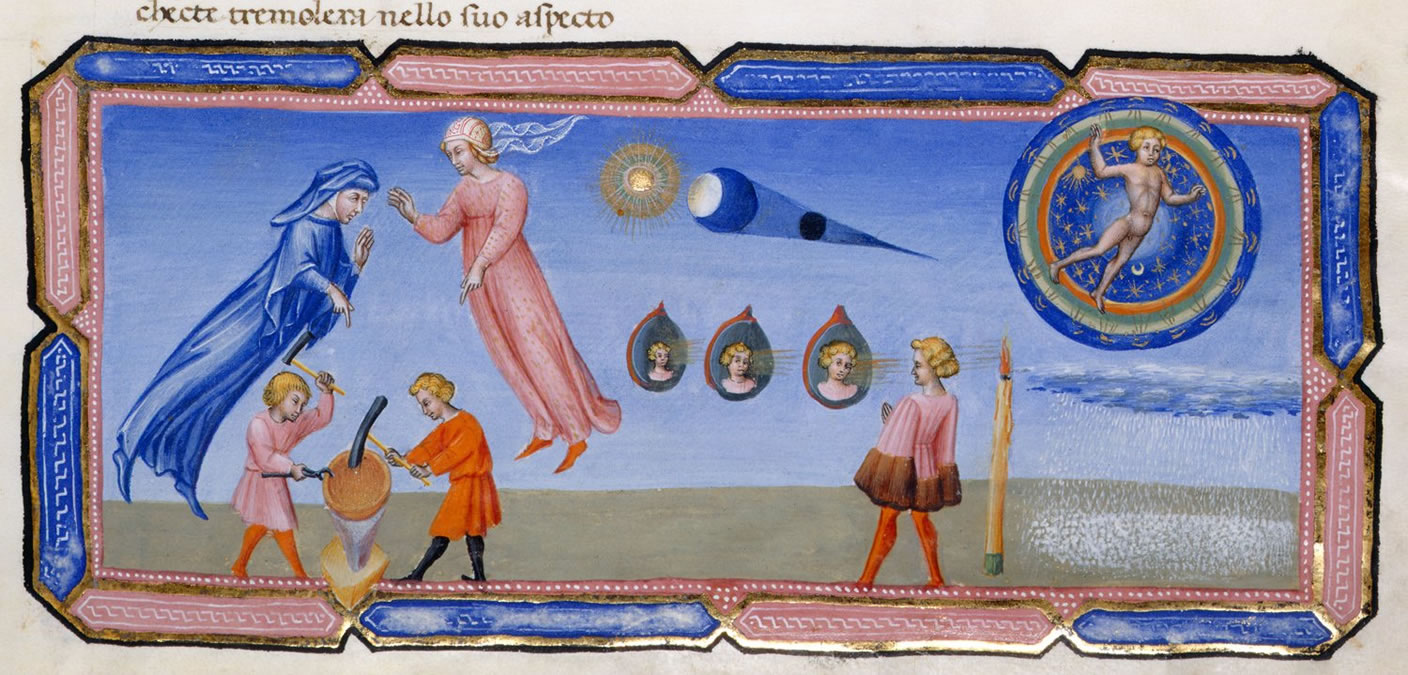
But the image can already be found in Dante Paradise II 49–51: "But now tell me: what are the dark marks on this planet's body that there below, on earth, have made men tell the tale of Cain?" Dante asked this question to his guide Beatrice when they arrived together on the Moon; Beatrice's answer was a long theological discourse with the explanation for the Moon's dark spots visible from the Earth. Beatrice also relied in her statement on the experiment with the three mirrors, shown in the miniature illustrated above from a manuscript in the British Library in London.
